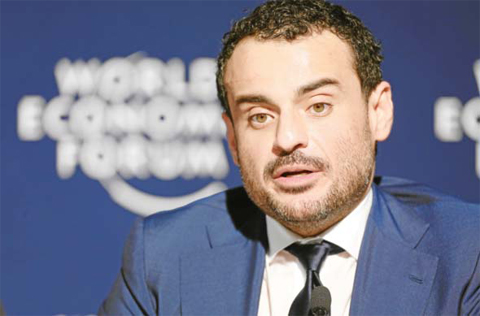KUWAIT: Bahrain’s economic growth has moderated in 2023, forecast at 2.5 percent versus a well-above-trend 4.9 percent in 2022 amid elevated interest rates that have hit consumption and borrowing, and lower oil prices. We see improvement next year, led by a 3.2 percent expansion in the hydrocarbon sector as the completion of maintenance on the Bahrain oil field pushes output higher to 196 kb/d. Growth in non-oil activity (around 80 percent of the economy), should be broadly steady at 3 percent amid the peaking of the monetary policy tightening cycle, the government’s continued commitment to development projects and still high oil prices. Decent expansion in non-oil GDP should contribute to slightly higher inflation (+1.5 percent) and credit growth (+2.4 percent) after softness in 2023.
Some previous progress in narrowing the fiscal deficit was reversed this year, with the deficit forecast to widen to 4.1 percent of GDP in 2023 (4.8 percent in H1 2023) on lower oil revenues (around 60 percent of all receipts). However, we see only limited spending growth and the government’s commitment to its Fiscal Balance Program is intact.
We expect the deficit to resume its narrowing path in 2024 albeit achieving fiscal balance would require a higher oil price than in our base case. Public debt (including concessional GCC development fund loans) declined to 100 percent of GDP by end-2022 as bond amortizations and nominal GDP rose. With debt issuance picking up in 2023-2024 to cover a larger fiscal deficit, the debt-to-GDP ratio could edge back up slightly. Given ongoing fiscal consolidation steps, a sharp drop in oil prices remains a key risk to the outlook.
Oman
Following an expected slowdown to 1.5 percent in 2023, Oman’s GDP growth could improve to 3.0 percent in 2024 aided by the government’s economic diversification strategy (Vision 2040) initiatives and higher oil output. Having contracted in 2023, we forecast oil GDP up 3.6 percent in 2024, given the expected unwinding of OPEC+ voluntary output cuts from January 2024 and higher gas production. Non-oil GDP growth is forecast to improve to 2.7 percent from 2.4 percent in 2023 amid higher construction sector output (helped by the Sultan Haitham Smart City and Oman-UAE Rail projects), a potential boost in tourism, and refining gains linked to the ramping up of the OQ8 Duqm refinery – though constrained somewhat by the ongoing need for fiscal caution.
The Medium-Term Fiscal Plan is bearing fruit and we expect the government to post a surplus through the forecast period – just about. This year we forecast a reduced surplus of 0.3 percent of GDP on the back of lower oil receipts, widening to 1.8 percent in 2024 on increased oil revenues. Public debt is expected to continue its downward trajectory from 40 percent of GDP in 2022 (and a peak of 70 percent in 2020), with the authorities recently identifying a ‘safe’ debt limit of 30 percent of GDP signaling that debt reduction will remain a key theme.
More positive fiscal and debt metrics prompted ratings agencies Fitch and S&P to upgrade the government’s credit rating to “BB+” from “BB” in recent months. Lower-than-expected oil prices or an increase in the government debt-to-GDP ratio due to looser fiscal policy provide the most significant downside risks to our outlook. Key upside risks include higher-than-expected oil prices and stronger-than-projected non-oil growth, which would improve fiscal revenues and reduce social spending pressures on the government.
Qatar
Qatar’s economic activity is set to moderate in 2023 from last year’s exceptional World Cup-driven growth, curbed by tighter monetary conditions, limited hydrocarbon sector growth, and relative to a very strong 2022. With only minor further increases in gas production expected, the private sector should drive economic growth over the forecast period, with monthly data since April signaling a pickup in non-hydrocarbon activity. PMI numbers were consistently in expansion (9-month average of 53), visitor arrivals remained elevated (up 150 percent y/y in the period Jan-Aug), while credit growth hit a 19-month high in September of 4.5 percent despite higher interest rates.
We forecast GDP growth of 2.3 percent and 2.5 percent in 2023 and 2024 respectively, with non-oil output up 3.1 percent and 3.5 percent. Further out, economic activity will be supported by higher construction activity as progress on the $30 billion North field gas expansion megaproject accelerates ahead of the scheduled completion of phase 1 in 2026, which would raise LNG output significantly (from the current 77 mtpa to 127 mtpa), boosting hydrocarbon revenues and enabling the funding of other Vision-linked infrastructure projects.
We forecast fiscal surpluses in 2023 (8.4 percent of GDP) and 2024 (7.3 percent of GDP) on the back of still-elevated hydrocarbon receipts and relative spending restraint, although capex on strategic projects may pick up in 2024 as the government takes advantage of improved fiscal space, with its debt-to-GDP ratio having declined from a peak of 73 percent in 2020 to 48 percent in 2022. Upside risks to the outlook include higher gas prices possibly from a renewed shortage or a stronger global demand. Downside risks stem from a flare-up in geopolitical tensions or a global recession leading to lower gas demand and prices.











